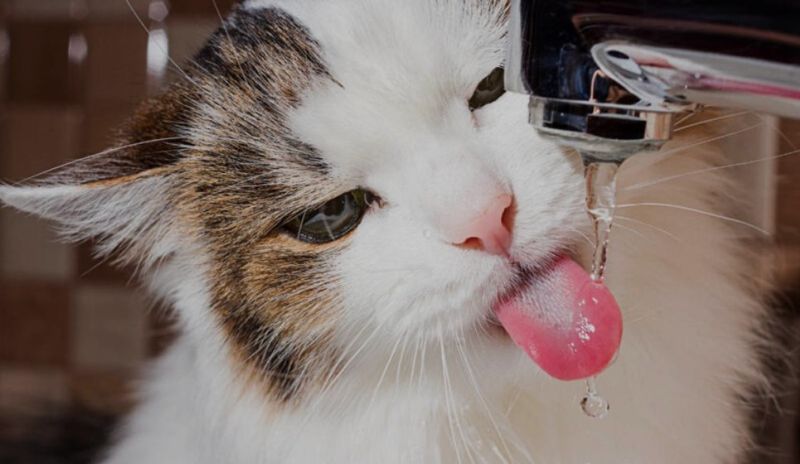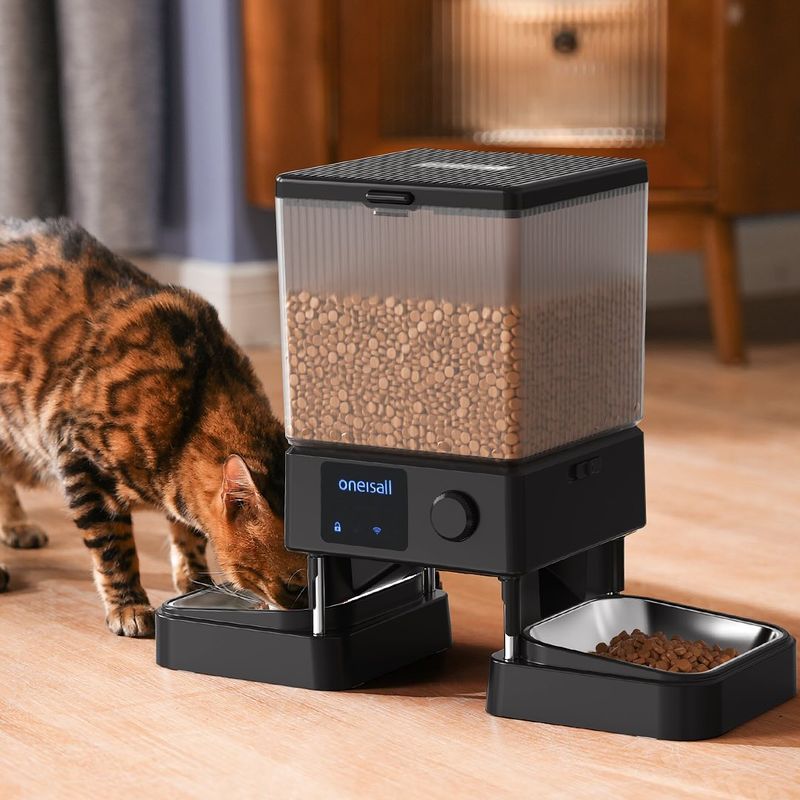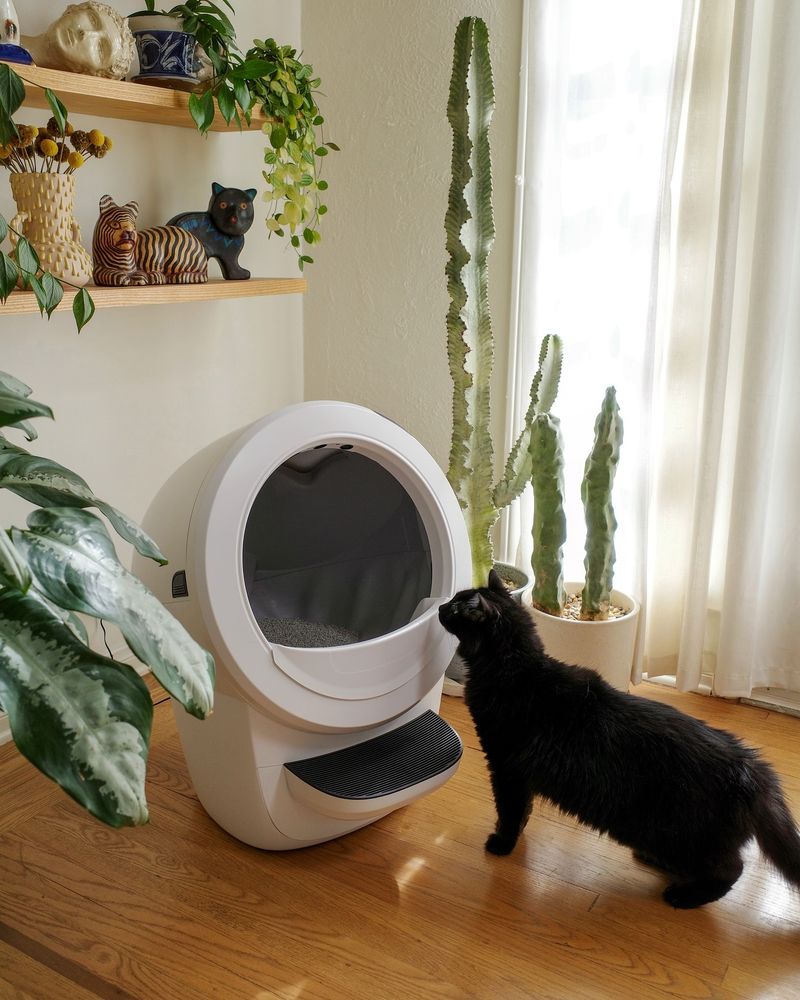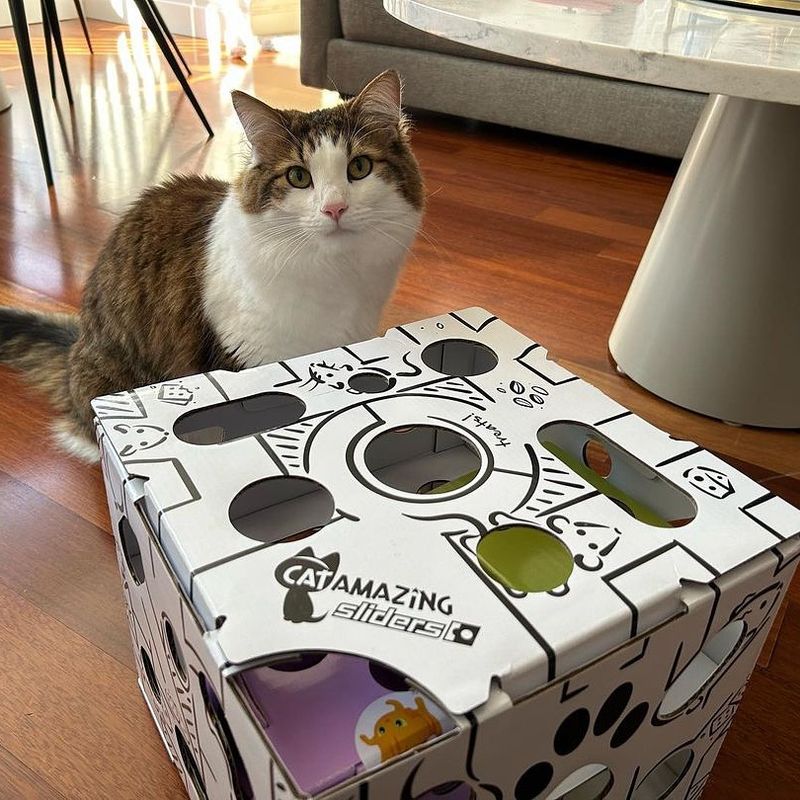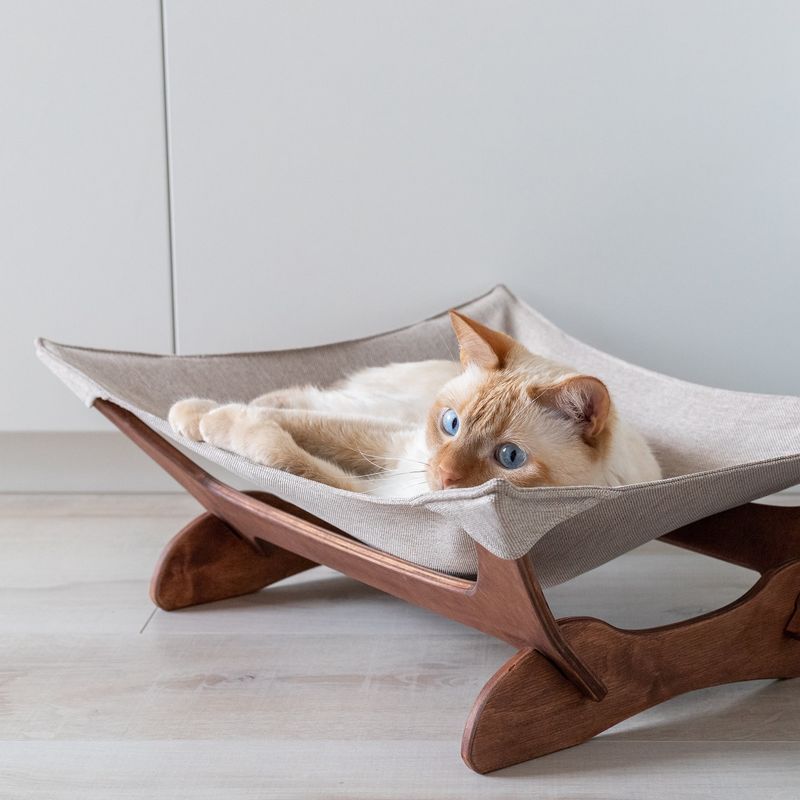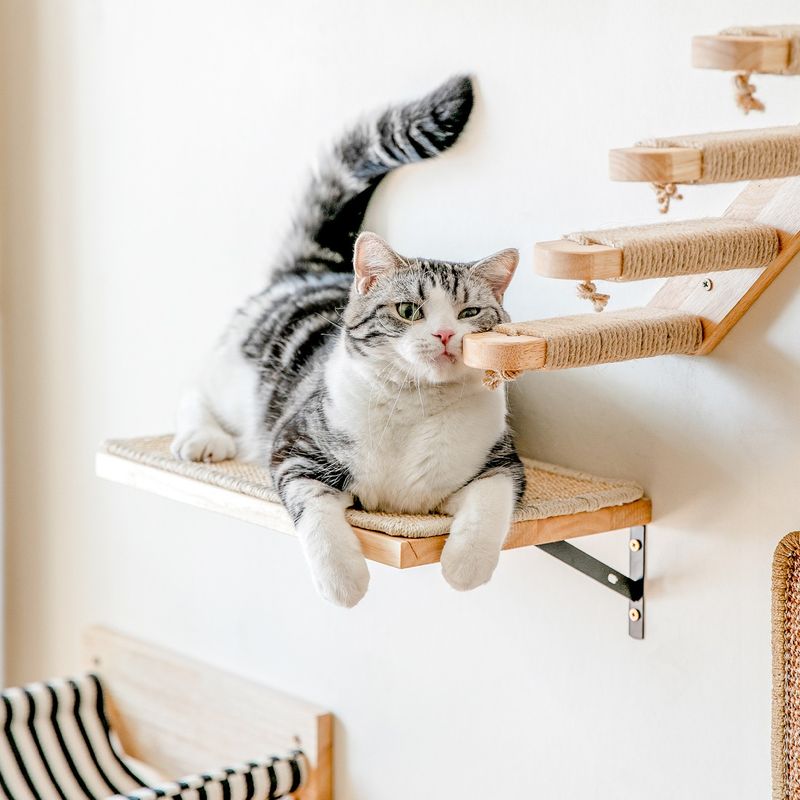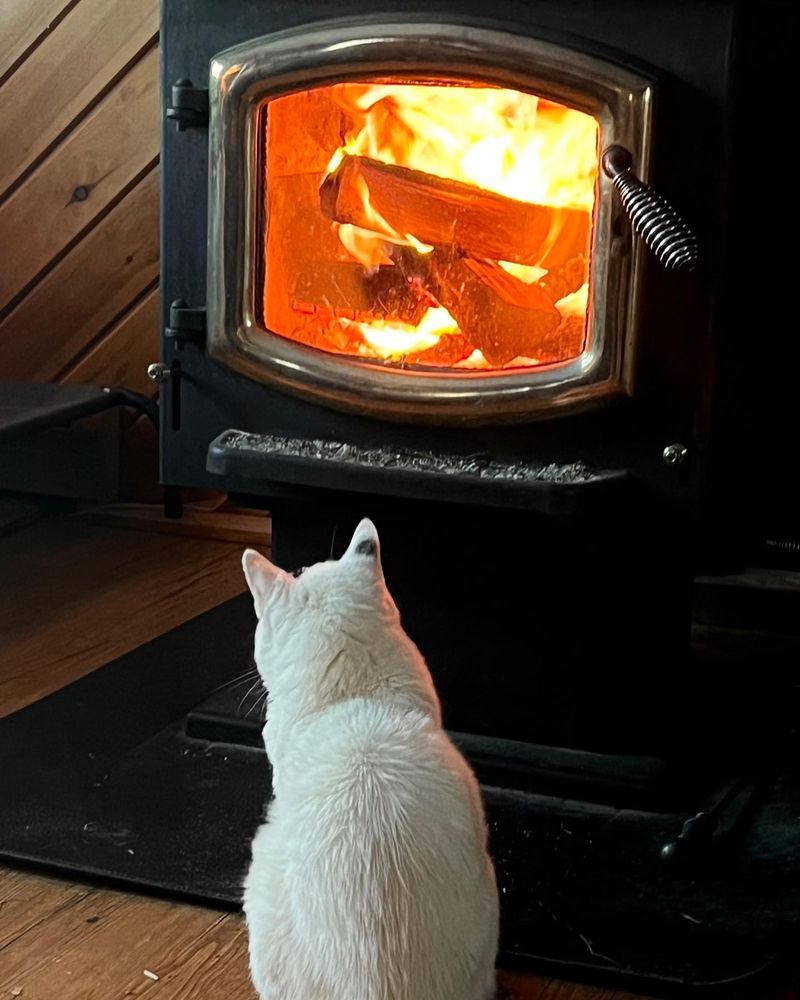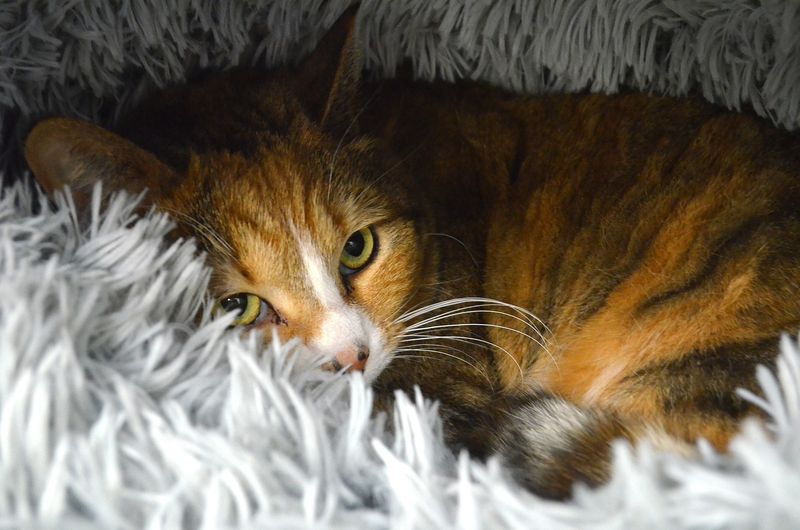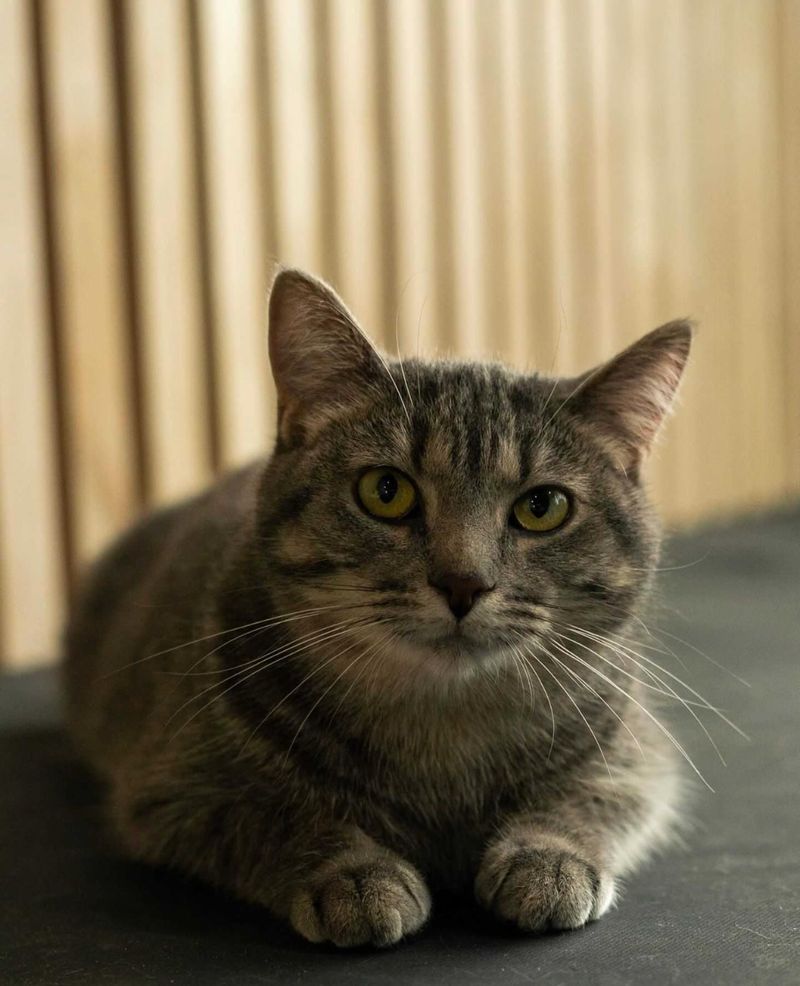📖 Table of Content:
Can I really leave my cat home alone? It’s a question every loving cat parent asks eventually—and the answer might surprise you.
While cats have a reputation for independence, they’re far from low-maintenance loners. In truth, your feline companion thrives on routine, comfort, and just the right amount of stimulation—even when you’re not around to provide it directly.
Whether you’re stepping out for a long workday or heading off for a weekend getaway, leaving your cat home alone doesn’t have to be stressful (for either of you). In fact, with the right setup, your absence can feel more like a relaxing staycation than a lonely stretch of boredom.
From smart feeders to “cat TV,” there are countless ways to make sure your kitty stays hydrated, fed, entertained, and emotionally secure while you’re away. Here’s your ultimate guide to creating a cat-friendly environment that keeps those purrs coming, even when the house is quiet.
1. Fresh Water Station
Hydration is crucial for cats, especially when you’re not there to refill their bowl. Consider investing in a pet fountain that keeps water circulating and fresh all day long. Many cats prefer running water and are more likely to drink from a fountain than a still bowl.
Place multiple water stations throughout your home to encourage drinking. This is particularly important if your cat tends to be finicky about water intake or if you have a multi-level home.
2. Automatic Food Dispenser
Gone are the days of leaving mountains of kibble that your cat devours immediately. Timed feeders release pre-portioned meals at scheduled intervals, maintaining your cat’s routine even when you’re gone. This prevents overeating and keeps their metabolism regular.
Many models allow for ice packs to keep wet food fresh. Look for dispensers with battery backups in case of power outages. Some smart feeders even connect to your phone, letting you adjust feeding times remotely or check if your cat has eaten.
3. Clean Litter Box Setup
Nothing ruins a cat’s day faster than a dirty bathroom! Start with a freshly scooped box before leaving. For longer absences, consider adding a second temporary box to give your cat options if one becomes too soiled.
Self-cleaning litter boxes can be worth the investment for busy cat parents. These automated systems rake waste into a sealed compartment after your cat uses the box. Choose clumping litter with good odor control, and place boxes in quiet, accessible locations away from food and water sources.
4. Interactive Toys
Boredom can lead to destructive behavior in cats left alone. Battery-operated toys that move unpredictably mimic prey, triggering your cat’s hunting instincts. These can keep them engaged for hours while you’re away.
Puzzle feeders that dispense treats as your cat plays provide mental stimulation and a tasty reward. Rotating toys regularly keeps things interesting – what was ignored yesterday might be fascinating tomorrow. Avoid toys with small parts that could become choking hazards or string toys that might cause entanglement when unsupervised.
5. Comfortable Resting Spots
Cats spend up to 16 hours daily sleeping, making cozy napping spots essential. Place soft beds in both sunny and shaded areas so your cat can regulate their temperature throughout the day. Window perches are particularly popular as they combine comfort with entertainment.
Consider your cat’s preferences – some prefer elevated beds that provide security, while others love cave-style beds for hiding. Cats often rotate sleeping spots, so having multiple options throughout your home ensures they’re always comfortable. Washable bed covers make maintenance easier when accidents happen.
6. Window Access
A window with a view provides hours of entertainment for home-alone cats. Bird watching, following moving shadows, and observing neighborhood activities stimulate their minds and prevent boredom. Secure screens are essential to prevent escapes or falls.
Window perches or shelves give cats comfortable observation posts. Position furniture near windows to create natural climbing paths. Some pet parents enhance the experience with bird feeders outside frequently viewed windows, creating a “cat TV” effect that keeps felines engaged throughout the day.
7. Scratching Posts
Scratching is a natural behavior that helps cats stretch muscles, mark territory, and maintain claw health. Without appropriate outlets, your furniture might become the target. Provide multiple scratching surfaces with different textures and orientations.
Vertical posts should be tall enough for a full stretch. Horizontal scratchers appeal to cats who prefer scratching while lying down. Cardboard, sisal, and carpet offer different textures to explore. Sprinkle catnip on new scratchers to attract interest, and place them in areas where your cat typically hangs out.
8. Climbing Structures
Vertical space is precious real estate in a cat’s world. Cat trees, shelves, and climbing walls satisfy their natural instinct to seek high vantage points where they feel secure. These structures provide exercise, play opportunities, and observation posts all in one.
Multi-level cat furniture offers different activity zones – sleeping platforms, hiding spots, scratching posts, and play areas. Position climbing structures near windows when possible. For older cats or those with mobility issues, ensure there are easy paths up and down with ramps or strategically placed stepping points.
9. Background Noise
Silence can be unsettling for cats accustomed to household sounds. Leaving a radio or TV on at low volume provides comforting background noise that masks startling outside sounds. Some cats enjoy nature programs or shows with bird sounds, while others prefer classical music or talk radio.
Cat-specific videos featuring birds, squirrels, and fish can be found online. Many streaming services offer hours of content designed to entertain felines. Keep volume moderate – the goal is gentle background sound, not disruption. This audio companionship helps prevent the stress some cats feel in too-quiet environments.
10. Cozy Hiding Places
Even the most social cats need private retreats. Cardboard boxes, covered beds, and cat tunnels provide security when your cat wants alone time. These hideaways are especially important during stressful situations like thunderstorms or construction noise outside.
Some cats prefer elevated hiding spots like the top of a bookshelf or cabinet. Others seek enclosed ground-level spaces. Having multiple options throughout your home ensures your cat can always find comfort. Add a familiar-smelling item like a t-shirt you’ve worn to make these spaces even more appealing and soothing.
11. Grooming Tools
Self-grooming occupies significant time in a cat’s day. Supporting this natural behavior with accessible grooming tools keeps them busy and comfortable. Stationary brush corners that cats can rub against allow them to groom hard-to-reach spots without your help.
Cardboard or sisal grooming pads provide texture for face rubbing, which helps cats spread their scent and mark territory. For long-haired cats, accessible combs can prevent painful mats from forming during your absence. These tools satisfy physical needs while providing sensory enrichment and promoting healthy coat maintenance.
12. Safety Precautions
Cat-proofing becomes essential when you’re not there to supervise. Secure or remove dangerous items like string, rubber bands, plastic bags, and toxic plants. Close toilet lids, secure cabinets containing chemicals, and check that window screens are intact.
Hide electrical cords or cover them with protective tubing. Consider closing off rooms with delicate items or hazards you can’t secure. Some pet parents install pet cameras with two-way audio to check in and even speak to their cats remotely. Leave a note on your door with emergency contact information and your cat’s details.

